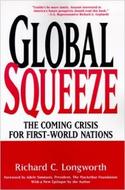While running for office, President Trump said the border wall would cost about $8 billion, a figure widely recognized as an unreasonably low estimate". This week, the Department of Homeland Security (DHS) estimated the cost of construction at $21.6 billion. Figuring out what the wall would cost has been a source of debate for longer than the last election cycle. In 2013, the bipartisan "Gang of Eight" senators set aside $1.5 billion for a plan to add 700 miles of wall - also a completely unrealistic budget. read more »
Trump Country: Where the Immigrants Aren't
Trump did best in the states with the lowest percentages of foreign-born residents.
“I love the poorly-educated”, gushed Donald Trump after winning the Nevada primary in February. But in the end, what happened in the primary, stayed in the primary. Come November, Trump lost the state to Hillary Clinton, a turn that is explained by the fact that there is a higher percentage of foreign-born residents in Nevada than in any state won by Trump, save Florida. read more »
How Richard Longworth Predicted 20 Years Ago That Globalization Would Cause a Social Crisis
Global Squeeze: The Coming Crisis for First-World Nations
Richard C. Longworth
McGraw-Hill 1998
Whenever we see the reality of momentous shifts in society, it’s always good to go back and take a look at the people who saw it coming far away. Generally speaking, there were usually people who understood what was happening in advance. For example, Daniel Bell wrote his book The Coming of Post-Industrial Society in 1976. There were probably even other earlier books touting the same theme. read more »
- Login to post comments
The 2016 Census of Canada: All About the Prairies
Statistics Canada has just announced population counts from the 2016 census and the narrative is all about the Prairie Provinces. Alberta, Saskatchewan and Manitoba (yes, Manitoba) were the three fastest growing provinces. Metropolitan area growth was dominated by the Prairies, along with metropolitan areas outside the largest in Ontario and British Columbia. read more »
- Login to post comments
Decentralize Government to Resolve Country's Divisions
America is increasingly a nation haunted by fears of looming dictatorship. Whether under President Barack Obama’s “pen and phone” rule by decree, or its counterpoint, the madcap Twitter rule of our current chief executive, one part of the country, and society, always feels mortally threatened by whoever occupies the Oval Office. read more »
Re-inhabitation of Small Town America
My friend Kirsten Dirksen at faircompanies.com recently posted a new video about Water Valley, Mississippi. It demonstrates that there are plenty of great compact mixed use walkable neighborhoods out there that can be re-inhabited. Building anything of this kind from scratch is theoretically possible, but it almost never happens due to endless zoning regulations, building codes, and cultural inertia. Water Valley is lucky in the sense that it’s just down the road from a prestigious university. read more »
- Login to post comments
How the Visa Ban Will Hurt US Innovation
A key reason for the prosperity found in the United States is the ability of universities and companies to attract the best and brightest people from abroad. Shutting out skilled individuals from entire countries could have grave consequences for America’s intellectual institutions as well as knowledge-intensive businesses. The obstacles put in place following the 2001 terrorist attack did reduce the position of the US in the global competition for talent, yet the regulations were about increasing security and allowed those that had been screened to enter. read more »
Trump and the End of the World Order
In comparison with Barack Obama, who was well regarded in the foreign media, Donald Trump does not come off as a good guy. He is also clearly redefining the country’s identity and global focus. The first American president since the 1920s to walk away from a role as global pooh-bah, Trump instead defines his job as helping the people who elected him. read more »
Focusing on Mobility Not Travel Mode for Better Economic Growth
The last article outlined research on job access by cars, transit and walking by the University of Minnesota Accessibility Observatory that assesses mobility by car, transit and walking in 49 of the nation’s largest metropolitan areas. Of course, it is to be expected that the metropolitan areas will have the largest number of jobs accessible to the average employee simply by virtue of their larger labor markets. read more »
- Login to post comments
What the U.S. Thinks About Immigration - and Why it Should Matter When We Attempt Reform
Americans agree that the country’s policies on handling immigration have long needed reform. However, what kinds of reform and the impact immigration itself has on the United States are matters of great controversy. For both former Presidents Barack Obama and George W. Bush, promising efforts at comprehensive immigration reform were blocked by the unrelenting opposition. read more »
- Login to post comments





















